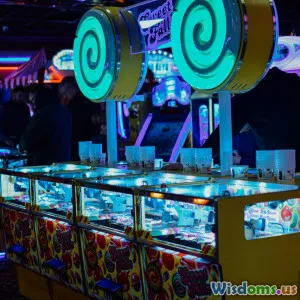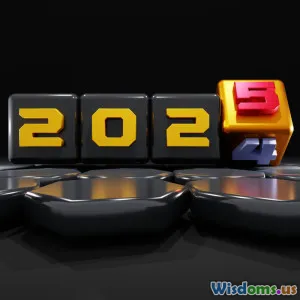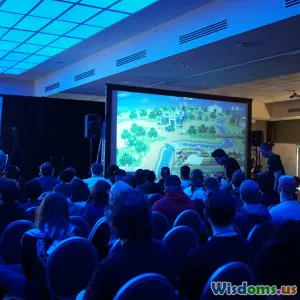
Why Are Speedruns Getting Faster in Modern Mario Games
8 min read Explore the rapid evolution of speedruns in modern Mario games, unraveling key factors behind record-breaking gameplay achievements. (0 Reviews)
Why Are Speedruns Getting Faster in Modern Mario Games?
Speedrunning has become a captivating subculture within the gaming community. Among the many titles embraced by speedrunners, modern Mario games consistently see their world records shattered, often by large margins and in surprisingly short time frames. But why exactly are speedruns getting faster in these games? What drives this continuous evolution toward greater speed and efficiency? In this article, we'll analyze the multifaceted reasons behind this phenomenon—from player skill and game design to community dynamics and technological innovations.
The Appeal and Challenge of Speedrunning Mario
Mario games have long been a cornerstone of gaming history and culture. Titles from "Super Mario 64" to "Super Mario Odyssey" have offered players vibrant worlds, ingenious level design, and precise controls. These qualities naturally lend themselves to speedrunning, as players chase the thrill of completing games as fast as humanly possible.
Speedrunning modern Mario games offers a unique appeal:
- The balanced design allows for fluid movement and advanced techniques.
- Challenges demand not just reflexes but strategic route planning.
- There’s room for innovative exploits and optimization.
Yet, despite these factors being present since earlier titles, recent speedrun times have dropped rapidly. This begs the question: what is prompting this acceleration now?
Player Skill Evolution and Community Knowledge
Collective Skill Refinement
The most direct reason for faster speedruns is the inexorable improvement of player skill over time. The Mario speedrunning community is highly engaged and collaborative, constantly refining gameplay techniques and sharing discoveries.
Speedrunning forums, Discord servers, and tutorial content on platforms like YouTube and Twitch have democratized access to top-tier strategies. This accelerates skill acquisition beyond traditional trial and error.
Example: The advent of 'Long Jump' optimizations in Super Mario 64 illustrates how players dissect game mechanics exhaustively, yielding more efficient movement.
Iterative Strategy Optimization
Techniques once considered unexploitable gradually become mainstays of speedrun strategy, thanks to collective experimentation. Community members painting a detailed understanding of the games’ underlying mechanics find ways to save milliseconds scattered across levels that accumulate into minutes overall.
Research into frame-perfect inputs, glitch discovery, and route prediction leads to near-perfect runs. The faster times recorded are often products of these marginal yet compounded improvements.
Game Design and Mechanics That Encourage Speed
Technical Sophistication in Modern Titles
Modern Mario games feature sophisticated physics engines and nuanced control schemes not present in older titles. Super Mario Odyssey, for example, introduces capture mechanics, varied terrain interactions, and more fluid movement capabilities.
These expanded mechanics provide players with a wider toolkit to enhance movement speed, include seamless transitions through environments, and enable combo-like stunts that previously didn’t exist.
Built-in Challenges Fueling Speedrun Potential
Levels designed with time challenges, collectibles requiring rapid precision, and multi-path options offer natural opportunities for speed optimization. Developers often introduce subtle shortcuts that players eagerly exploit once discovered.
Example: In Super Mario 3D World, warped paths and launch pads facilitate speed boosts that, when meticulously applied, shave off valuable seconds.
Technological Advances and Tools Aiding Speedrunners
High-Definition Capture and Playback
Modern capture solutions allow speedrunners to analyze their runs frame-by-frame. This technological convenience enables identifying imperfections, optimizing key input timings, and benchmarking improvements.
Input Tools and Emulators
Some speedrunners use precise input recording devices or launch runs on emulators that offer features such as savestates and slow-motion analysis. This helps with training difficult segments and slip-ups that might be hard to replicate during real-time play.
While purists may defeat the use of emulators in official speedruns, experimental runs leverage these tools to establish new techniques eventually applied in console runs.
Online Communities and Streaming
Streaming platforms like Twitch amplify community interaction, allowing newcomers and veterans to watch, learn, and contribute in real time. Collaborative run attempts and feedback cycles decrease time taken to refine a run.
Competitive Drive and Speedrunning Events
High-profile events such as Games Done Quick (GDQ) incentivize speedrunners to push the boundaries through exposure and prize incentives. The prestige attached to record-breaking performances fuels motivated players eager to etch their names into leaderboards.
Frequent marathons showcase and celebrate the latest speed techniques, often broadcasting new discoveries immediately and inspiring rapid adoption. Friendly rivalries compound this effect, creating a virtuous cycle of improving times.
Notable Examples Highlighting the Trend
- Super Mario Odyssey category “any%” speedrun improved from about 1 hour 10 minutes in 2017 to under 44 minutes by mid-2023, demonstrating substantial progress despite the game’s complexity.
- Super Mario 3D World + Bowser’s Fury speedruns frequently set new benchmarks as players jump on combined mechanics between two titles and optimize segmented runs faster than initially thought possible.
Conclusion
The accelerating pace of speedruns in modern Mario games is a product of intertwined factors. Enthusiastic players continuously push the envelope, fueled by collaborative communities equipped with technological and educational tools. Sophisticated game design that expands execution possibilities also invites increasingly creative strategies.
Far from a static display of reflexes, modern Mario speedrunning exemplifies a dynamic, evolving art form—a confluence of science, sport, and social engagement. For anyone interested in gaming, watching these runs is a testament to human ingenuity leveraging every frame of possibility. It inspires new players and veterans alike to dive deep into the games and contribute to the next generation of faster, more dazzling runs.
Speedrunning Mario isn't just about getting faster; it’s about reshaping how we approach gaming itself.
Rate the Post
User Reviews
Other posts in Game Guides & Walkthroughs
Popular Posts


















